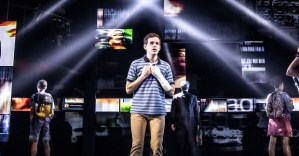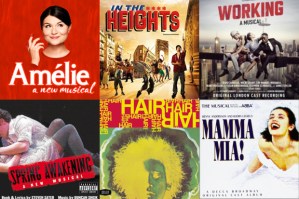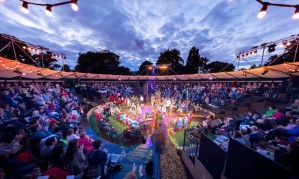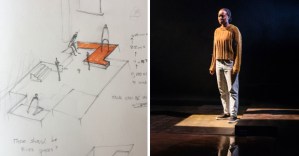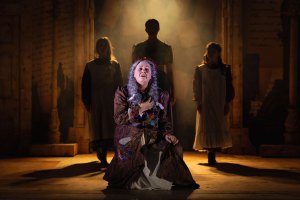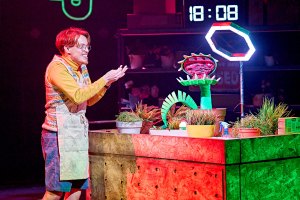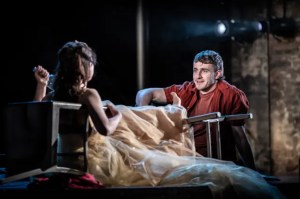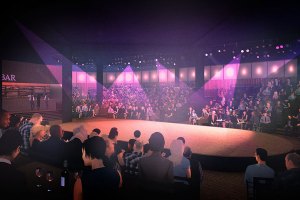Bold colours and gauze walls: designing a Broadway play for a tiny space
As ”Two for the Seesaw” opens in London, designer Max Dorey explains how he came to stage the show
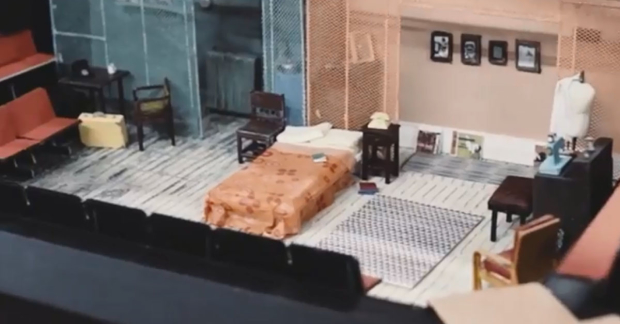
Two for the Seesaw is set across two separate apartments in New York City in 1956 and spans over a course of a year of the brief relationship of our two main characters, Jerry and Gittel. The piece was originally a Broadway play and was also adapted into a film starring Robert Mitchum and Shirley McLaine in 1962.
The piece has a slightly whimsical quality and veers from lighter territory into darker moments and I wanted the set and costume to reflect that. The play is set entirely between Gittel's cosy apartment and Jerry's slightly shabbier run-down bedsit. In the original Broadway production, the stage was split into two separate sets, with each apartment and its rooms inhabiting its own isolated space on the stage. We weren't ever going to be able to achieve the same thing in the tiny Trafalgar Studios 2, so the first job for myself and the director Gary Condes was how much of each world we felt we really ‘needed' for the play to work practically and artistically.
The original text has a great deal of practical farcical elements that happen largely in Jerry's run-down apartment with broken windows and falling clothes hooks which, though fun, did not add anything to the essential action of the play. The key props are the telephones and I wanted to employ a technique on stage that could simulate the 'split screen' effect from older movies when they are talking on the phone and show each person in their own world.
Both apartments are built around a strict colour and texture palette
In dividing the space up with bold colour, it allowed us to create these two distinct environments that wholly reflected the characters of the people who inhabit the spaces. This also allowed them to feel separated from each other whilst both in the same visual medium. Both apartments are built around a strict colour and texture palette of those who inhabit them. Gittel's space is filled with floral decorations, decorative elements and personal keepsakes. This helps make the space feel real but also reflective of the personality within the space. She is not wealthy, but is creative and makes do with what she can find, repair or make herself. Her space is lighter, airier and bigger, she lives in a world of peaches, pinks, oranges and reds, all warm colours, as well as with floral motifs consistently showing throughout the play in the props. Jerry, however, is in a space with bare cupboards, peeling paint and rising damp.
The idea of using see-through gauze walls developed from the sculptures of Do-Ho Suh, who creates amazing recreations of buildings in lightweight polyester fabric. I was really struck by just how beautiful the almost ghost-like buildings were, as well as their vibrant colours and the opportunities it gave us to create more offstage spaces to really maximise the amount we could do with the set, further reflecting the relative fragility of the lives the two characters have made for themselves. As the title says, it is a seesaw between those two worlds and their balancing act when they collide.




